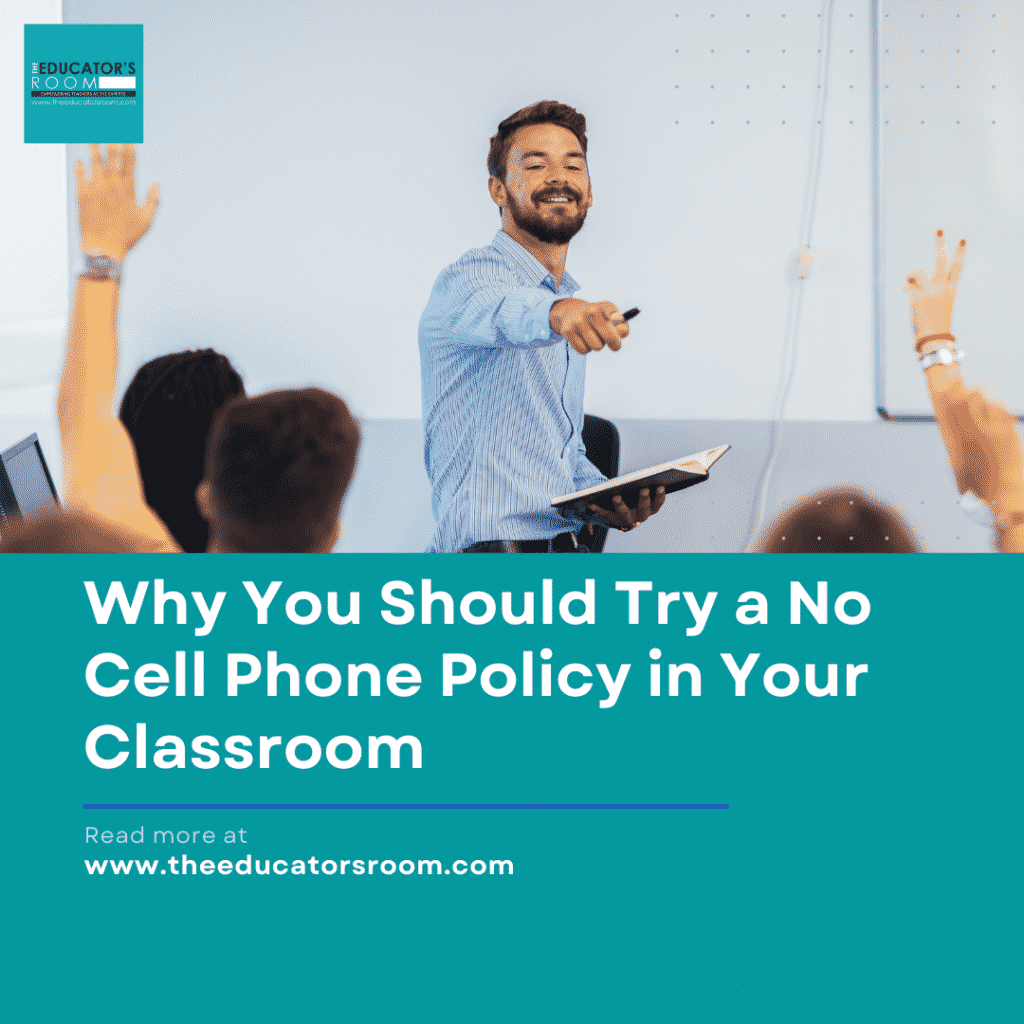Why You Should Try a No Cell Phone Policy in Your Classroom
[ad_1]
Have you signed up for The Educator’s Room Daily Newsletter? Click here and support independent journalism!
If you want to try an interesting experiment, ask your students to turn up the volume on their cell phones and tally how many times in a class period their cell phones signal an alert. We tried it a few years ago, and the kids quickly became exasperated with the constant interruptions. They couldn’t get through the lesson without that peppy little ping, and eventually, they gave up trying. For perhaps the first time in their lives, they saw their cell phones as nuisances. Yet while they were annoyed in the moment, it wasn’t enough to break their attachments to their phones. The pull is just too strong.
When they scroll through their feeds and discover that Byron and Malik broke up or that the new superhero movie is coming out in a week, they are immersing themselves in the world students have always gravitated toward: their friends and social lives. It’s not their fault that the design of the modern cell phone is so utterly addictive that it often boxes out all other stimuli, even essential classroom content whose only aim is to improve their knowledge and skills. That’s the real problem: What’s on the phone is usually more compelling than what’s in the classroom, no matter how engaging the lesson.
“Learning still requires focused attention if any of that classroom content is going to stick.” Why You Should Try a No Cell Phone Policy in Your Classroom Click To Tweet
Attention Is More Important Than Ever
There are plenty of useful apps for education, and letting kids use their cell phones for study games and review activities is a great break from routine. However, our students need to develop the ability to focus for sustained periods of time if they are ever going to tackle the personal and professional demands of a complex world. They need to learn that their attention is a commodity worth protecting and that every time they give their attention away, someone other than them is benefitting. They need to learn how to think critically if they are ever going to discover what they value and how they want to live in the world, and they can’t develop critical thinking if their thoughts are constantly interrupted.
In addition to these intrusions, the cell phone also interferes with the magnificence of ordinary joys. A funny meme can provoke a quick smile, but meaningfully engaging with a friend in person can inspire an entire day. While the phone screen can show us any image we desire, it can never replace the smell of cookies baking or the feel of a loved one’s arm around us. Life is still meant to be fully experienced in a visceral way. Learning still requires focused attention if any of that classroom content is going to stick.
The Real Cost of Interruptions
Classroom interruptions are nothing new. However, the real cost of these interruptions may surprise you. Researchers estimate that students lose 10 to 20 days of instructional time because of classroom interruptions: announcements, drills, calls from the office, visits from administrators. Considering how many alerts and texts and notifications the average student receives in a school day, those interruptions can easily compound into dozens of distractions, and the loss of truly meaningful time. What’s even more concerning is that our students are strengthening the habit of inattentiveness, of always being on alert for the next ping but being unable to grapple long with a tricky thought experiment or challenging math problem. And because what’s coming from their cell phones are the pings they’ve preset–the game app reminder, the text from Mom, the Snapchat streak they don’t want to break–what’s going on in the classroom takes a distant second place.
“Spending time away from their phones reminds students that they are not at the mercy of their cells after all.” Why You Should Try a No Cell Phone Policy in Your Classroom Click To Tweet
Educators Must Lead the Way
As educators, we work mightily to plan engaging lessons that get our students thinking and moving, imagining and experimenting. We gather and evaluate data, looking for that magic recipe that will provide a struggling student with the boost she needs to push through the rigors of chemistry or AP Lit. The last thing we want is for our students to be oblivious to what’s going on around them because what’s on the phone is so much more absorbing.
Our world has never been more complex, and the battle for our students’ time and attention has never been more fraught with challenges. Spending time away from their phones reminds students that they are not at the mercy of their cells after all. When we prioritize their learning and development in the classroom through a no-cell-phone policy, we show them they do not need to post every good thing online. Most importantly, when we give students a break from their phones, we offer them the opportunity to live a life that’s actually worth documenting and sharing.
As a country, we are more distracted than we have ever been. Information and stimuli come at us from every angle, and figuring out what’s worth paying attention to has become a part-time job. For most of our students, this distracted world is all they’ve known. In addition to school, many kids juggle sports, activities, and part time jobs. They are accustomed to doing multiple things at once. This requires sacrificing quality and depth in order to keep up with their favorite shows, influencers, and friends. Because their cell phones connect them to everything they care about, it can be a challenge to incorporate a no-cell-phone policy into the classroom. However, we educators do not shy away from a challenge, and this one can be a game changer for our students both in and out of the classroom.

Laura Sofen has been a middle and high school English teacher for the past 20 years. Prior to that she worked in publishing and corporate communications. She is an avid reader, hiker, traveler, and dog lover.
Editor’s Note: If you enjoyed this article, please become a Patreon supporter by clicking here.

[ad_2]
Source link

